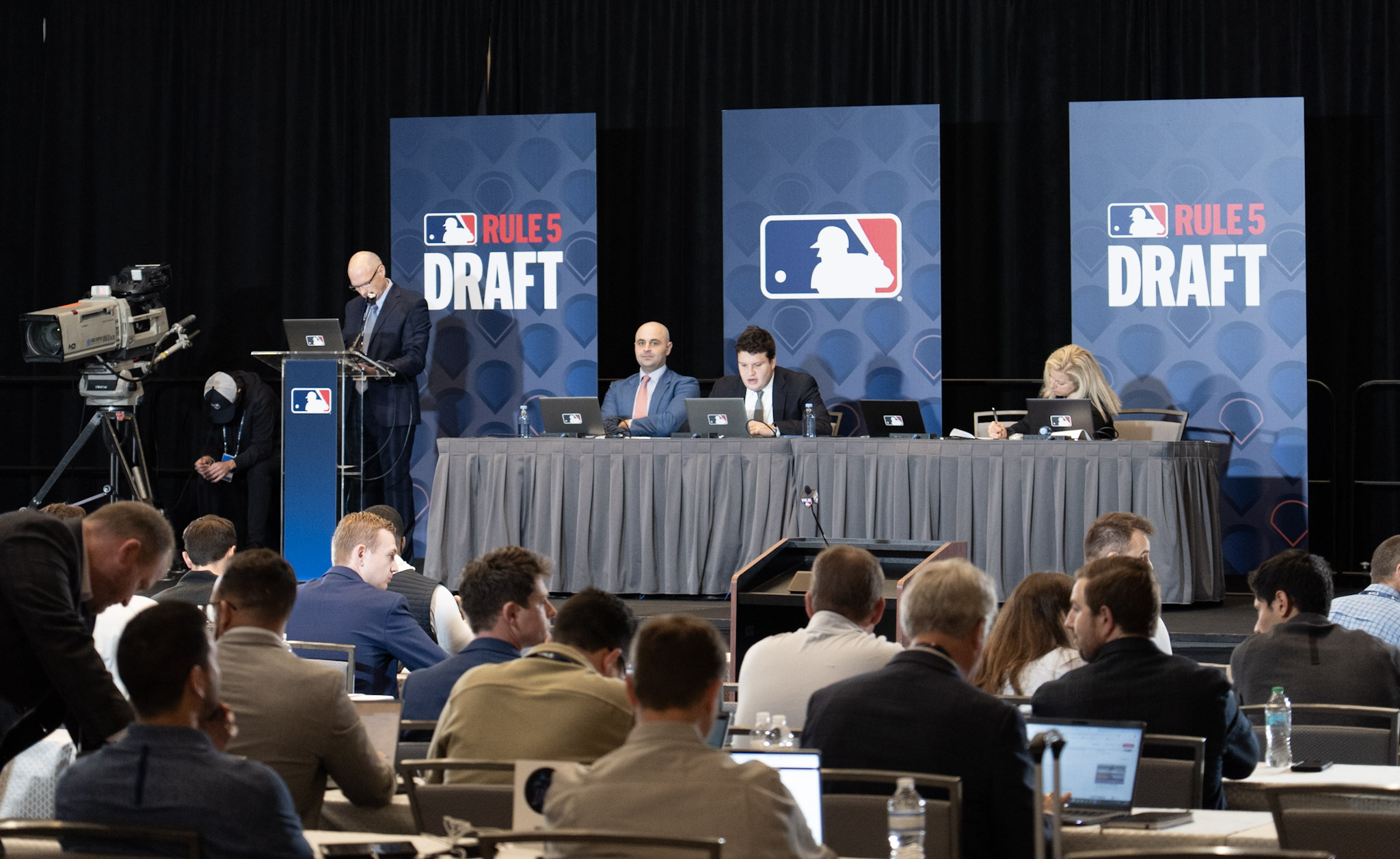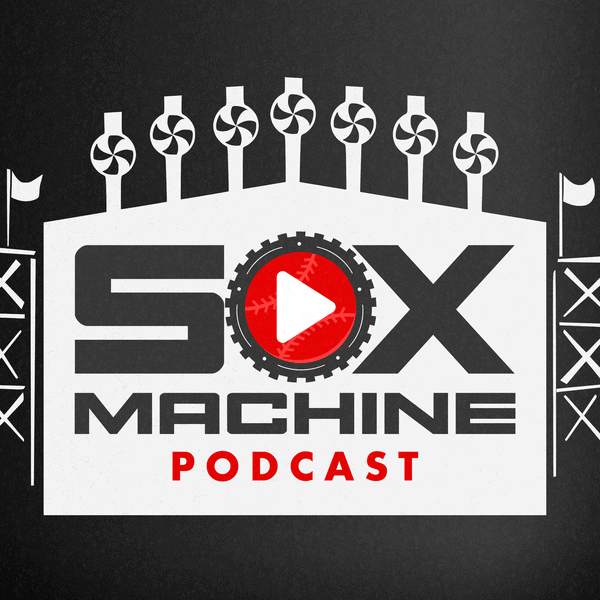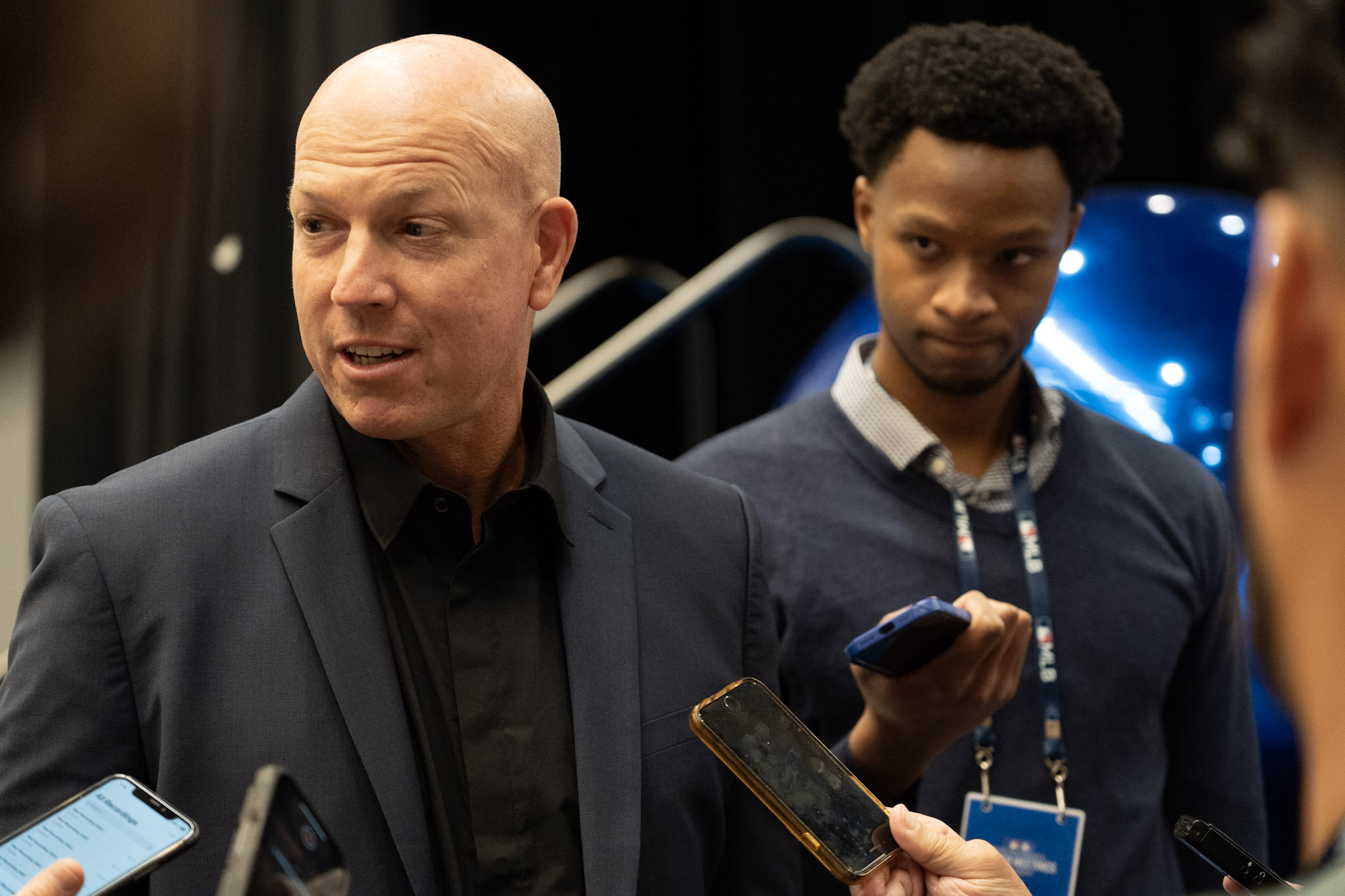Now that Garrett Crochet is officially off the White Sox depth charts and projections, it's a little easier to see one of the subtler significant problems Chris Getz will have to contend with as he fleshes out the 2025 roster: strikeouts from the starting rotation.
It was an issue last year, but Crochet masked it somewhat by posting the highest strikeout rate in all of baseball last year. At 35.1 percent, Crochet not only topped the K-rate leaderboard among starters who threw 120 innings -- he even beat any starter who threw 20 innings. Only when you expand the field to 10 innings will you find a starter who pushes Crochet into silver-medal position, as Shane Bieber struck out 20 of the 45 batters he faced in the process of tearing his UCL.
Of course, Crochet was able to beat almost all the small-sample oddities because half his season was composed of small samples, as the White Sox limited him to four innings and 60-70 pitches over the last three months. Let him routinely face lineups a third time through, or throw 90-plus pitches every time out into the dog days of August, and it stands to reason that Crochet's two-pitch attack would at least take on a little more contact, even if more damage couldn't be guaranteed.
Even with Crochet exploiting the limitations for fun and profit, White Sox starters finished with the fifth-worst strikeout rate in baseball at 21.1 percent. The ranking alone misrepresents the severity, because with a league average rate of 22 percent, the Sox were still within the bulbous part of the bell curve.
Remove Crochet from the equation and add up the five most qualified in-house rotation candidates, and the risk goes from overstating the issue to understating it. The bottom simply falls out:
| Pitcher | IP | K | K% |
|---|---|---|---|
| Sean Burke | 19 | 22 | 28.9 |
| Davis Martin | 50 | 47 | 21.4 |
| Jonathan Cannon | 124.1 | 91 | 17.4 |
| Drew Thorpe | 44.1 | 25 | 13.2 |
| Ky Bush | 17.2 | 11 | 13.2 |
| Total | 255.1 | 196 | 17.9 |
That 17.9 strikeout rate would be the second-worst in baseball, ahead only of the Colorado Rockies, who are usually at the bottom in this category due to circumstances within and outside of their control. The White Sox don't have the altitude excuse, and while Dan Szymborski hasn't published their 2025 ZiPS projections yet, Colorado's post gave him an opportunity to hint at the coming carnage.
But weirdly enough, it’s not quite as bad as it sounds. While no one crested a 100 ERA+, the Rockiers still have a lot of hurlers in the 90s, meaning they at least have a good selection of better-than-replacement options, which is something. Just to compare them to the White Sox again — sorry Pale Hose, but you’re a comparison tool for lousy teams now — the preliminary ZiPS projections have Chicago with just one pitcher with an ERA+ between 90 and 100. The Rockies have an entire team above that!
That sounds dreadful, but there's also some dissonance with how the White Sox finished the season feeling optimistic about the development of the non-Crochet starters. Perhaps they aren't singing the same tune if Burke doesn't deliver out-of-nowhere excellence in the season's final weeks, but individually, all the pitchers with lesser peripherals have reasons to expect better. Cannon and Martin have proven to be unusually adaptable, Thorpe was pitching with bone spur in his elbow, and Bush looked gassed at the end of the season.
The counterpoint is that when Martin, Cannon and Bush have been successful at the upper levels, it's mostly due to arsenals that keep hitters off balance. The jury's out on Thorpe, whose changeup is the single best pitch in the group, but not as special when the fastball rounds down to 90 and the cutter isn't distinct from the slider. It wouldn't be surprising if his success was more predicated on weak contact early in counts.
If you can keep the big picture in mind, none of these pitchers have to challenge 200 strikeouts in a season in order to be successful on a personal level. The idea is for a few of these guys combining to provide the body of the starting five, with Noah Schultz and/or Hagen Smith eventually heading it. That's why you can envision an effective rotation capable of being the AL Central's best entirely built from within, and without squinting.
It's just that the meantime could be awkward for reasons we all just witnessed. A rotation that struggles to rack up strikeouts, backed by a bullpen that doesn't exactly make up for it, puts a whole lot of pressure on defensive execution, and none of the infield and outfield permutations from the players on hand inspires much confidence in this regard (and that's before we even get to the prospect of a Luis Robert Jr. trade). Getz made a mistake by touting a better defense and higher baseball IQ at the outset of the 2024 season, and if he chooses the easier path to avoiding the same error -- accurately advertising mediocre defenders rather than acquiring better ones -- it sets the stage for the same kind of cluster failure that somehow manages to render the whole far less than the sum of its few working parts.






